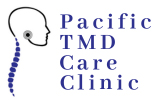Chronic headaches can stem from various sources, and one often overlooked factor is temporomandibular dysfunction (TMD). In this article, we delve into the role of TMD as a significant contributor to chronic headaches and facial pain, shedding light on its prevalence, misdiagnosis, and potential treatment approaches.
Unmasking the Prevalence of TMD
Recent studies highlight the staggering prevalence of TMD, impacting approximately 10 million Americans. Intriguingly, early research suggests that TMD may be the underlying cause of chronic headaches in 14% to 26% of individuals with recurring headaches. The significant portion of TMD-related headache cases underscores the need for heightened awareness and accurate diagnosis.
Understanding the Link Between TMD and Chronic Headaches
TMD, a condition affecting the temporomandibular joint and surrounding muscles, has been associated with recurrent facial discomfort and headaches. While its impact is substantial, TMD is frequently misidentified, with patients mistaking it for sinus-related issues. A review of pertinent literature emphasizes that TMD should be considered a probable yet underdiagnosed cause of chronic headaches and facial pain.
Diagnosis and Approach to Management
Diagnosing TMD necessitates a meticulous history and thorough physical examination. Patients presenting with chronic daily headaches and facial pain, devoid of objective evidence of sinus, neurological, or intracranial abnormalities, should prompt consideration of TMD. Fortunately, patients tend to respond positively to conservative therapies encompassing behavioral modifications and nonsteroidal anti-inflammatory drugs.
Exploring the Various Types of Headaches Linked to TMD
Headaches, a common ailment affecting people across the globe, can often have underlying causes that extend beyond the surface. One intriguing source of headaches lies in the realm of TMD, a condition involving the temporomandibular joint and associated muscles. TMD can manifest in various ways, giving rise to different types of headaches that significantly impact individuals’ lives.
Tension-Type Headaches (TTH)
TTH is one of the most prevalent headache types, characterized by a dull, achy sensation often felt on both sides of the head. Interestingly, TMD-related tension can contribute to these headaches. When the muscles controlling the jaw become tense due to TMD, the tension can radiate to surrounding areas, including the head, leading to tension-type headaches.
Migraine-Like Headaches
TMD-induced headaches can sometimes mimic migraines due to their intense and throbbing nature. These headaches can be accompanied by sensitivity to light, sound, and even nausea, mirroring classic migraine symptoms. The intricate network of nerves in the head and face can become sensitized due to TMD-related muscle tension or joint dysfunction, contributing to the onset of migraine-like headaches.
Sinus Headaches
TMD-related discomfort can often be misinterpreted as sinus headaches. The proximity of the temporomandibular joint to the sinuses can create confusion, as pain from TMD can radiate to the facial region, making individuals believe they are experiencing sinus issues. This misdiagnosis can lead to unnecessary treatments for sinusitis when the root cause is TMD-related.
Cervicogenic Headaches
TMD can trigger cervicogenic headaches, where pain originates from the neck and radiates to the head. The intricate interplay between the jaw, neck muscles, and cervical spine can contribute to these headaches. Muscle tension and dysfunction in the jaw and neck can lead to pain referral, causing discomfort in both areas.
Cluster Headaches
Cluster headaches, known for their excruciating pain and recurrent pattern, can also have ties to TMD. The complex relationship between the trigeminal nerve (involved in both TMD and cluster headaches) and the jaw muscles can potentially contribute to the triggering of cluster headache episodes.Understanding the diverse spectrum of headaches linked to TMD underscores the need for comprehensive evaluation and accurate diagnosis. Differentiating between various headache types is crucial for tailoring effective treatment strategies that address the root cause – the temporomandibular dysfunction. By acknowledging TMD’s potential to trigger different headache types, healthcare practitioners and patients can collaborate to find relief and enhance overall well-being.
Empowering Patients and Practitioners
As we uncover the connection between TMD and chronic headaches, it is imperative for patients and healthcare practitioners alike to be educated about this potential source of discomfort. By fostering awareness and understanding, we can work towards timely and accurate diagnoses, enabling individuals to embark on a path to relief and improved quality of life.
In conclusion, Temporomandibular Dysfunction stands as a significant yet often underestimated cause of chronic headaches. Its prevalence underscores the importance of comprehensive evaluation and early diagnosis, saving patients from needless treatments and offering a chance for effective management. By recognizing the pivotal role of TMD in chronic headaches, we empower both patients and healthcare providers to achieve better outcomes and alleviate unnecessary suffering.
References:
1. Lupoli, T. A., & Lockey, R. F. (2007). Temporomandibular dysfunction: an often overlooked cause of chronic headaches. Annals of allergy, asthma & immunology : official publication of the American College of Allergy, Asthma, & Immunology, 99(4), 314–318. https://doi.org/10.1016/S1081-1206(10)60546-7
2. Fernández-de-Las-Peñas, C., & Von Piekartz, H. (2020). Clinical Reasoning for the Examination and Physical Therapy Treatment of Temporomandibular Disorders (TMD): A Narrative Literature Review. Journal of clinical medicine, 9(11), 3686. https://doi.org/10.3390/jcm9113686
3. Gauer, R. L., & Semidey, M. J. (2015). Diagnosis and treatment of temporomandibular disorders. American family physician, 91(6), 378–386.

